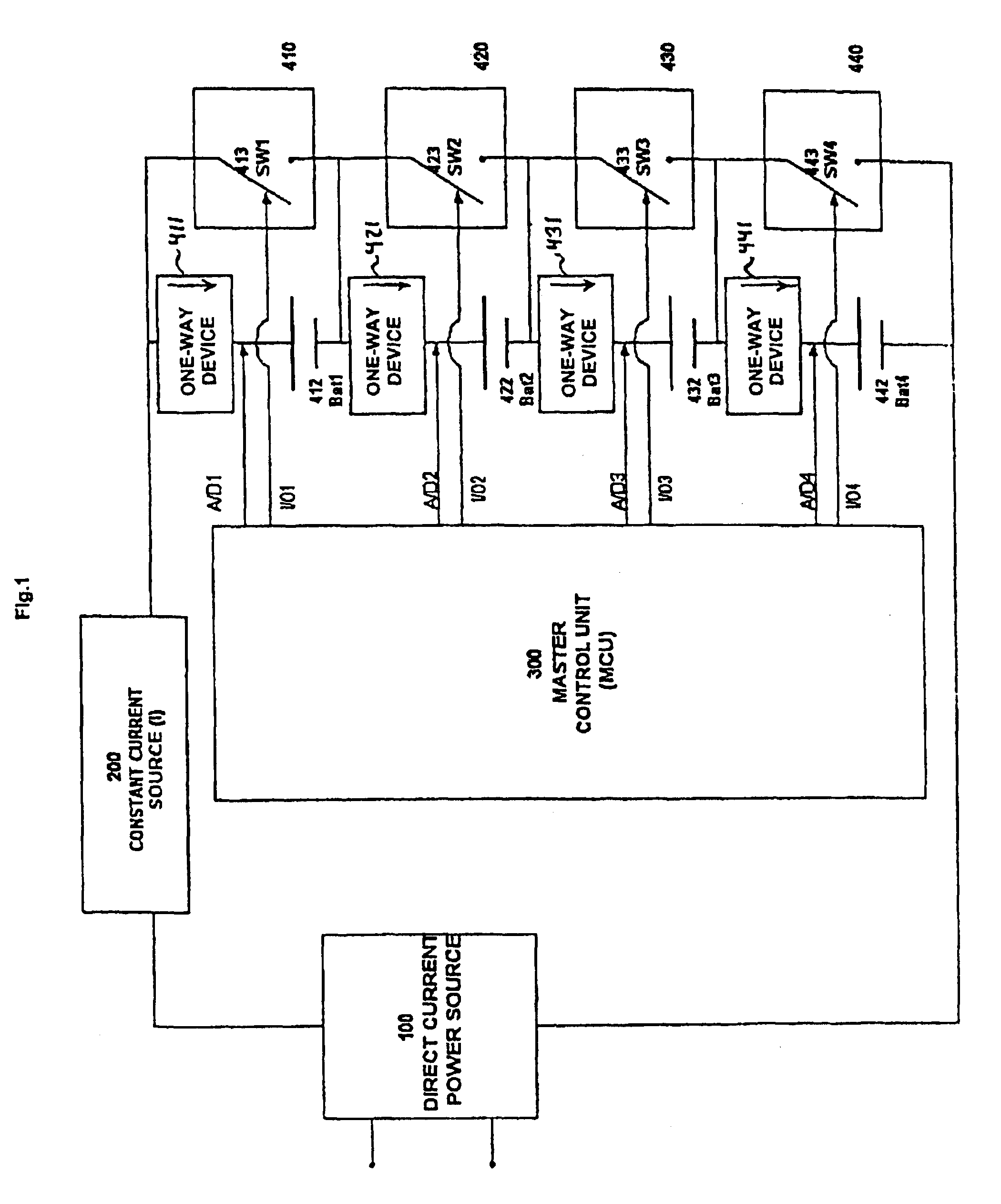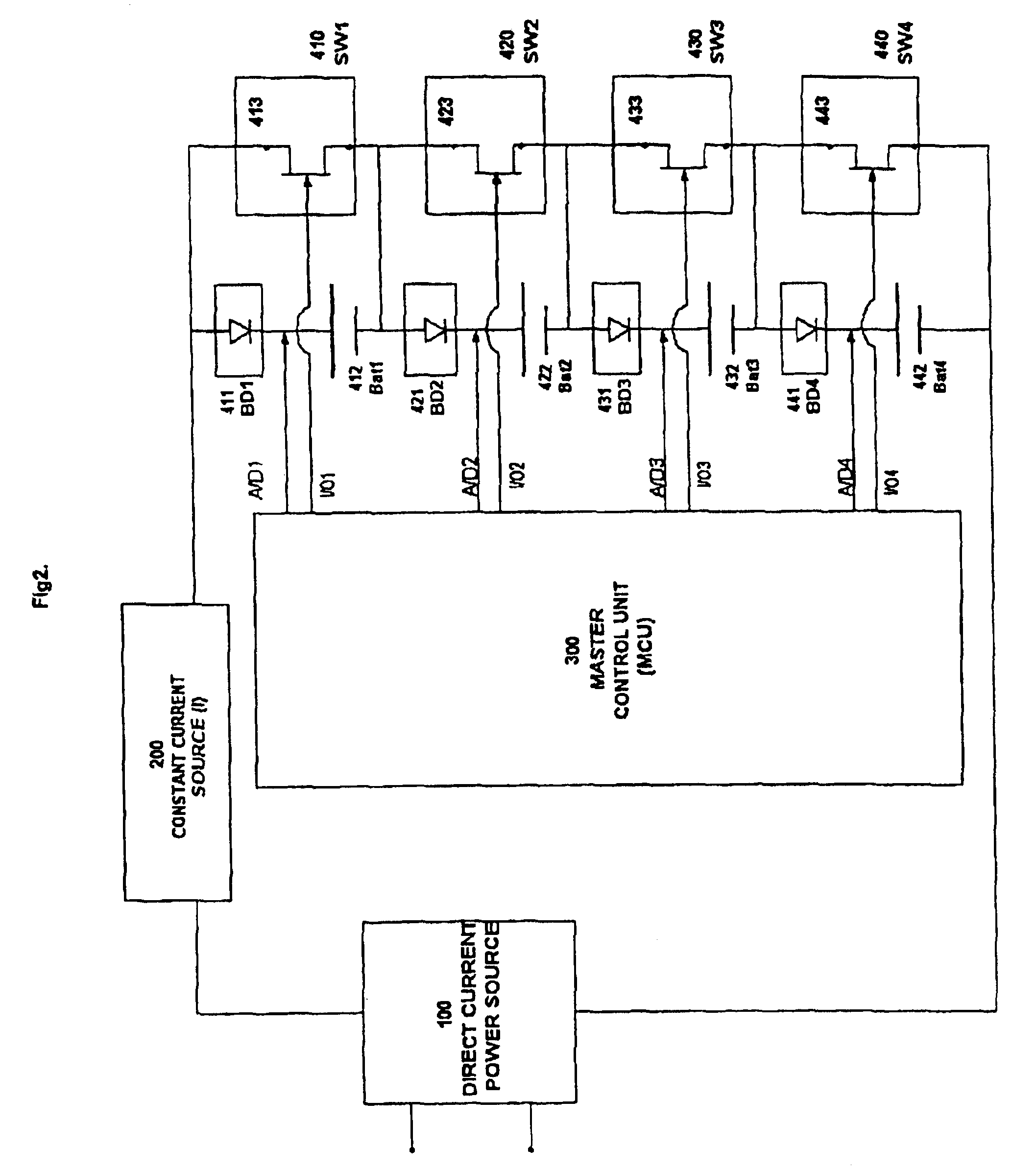Intelligent serial battery charger and charging block
a technology of intelligent serial battery and charging block, which is applied in the direction of transportation and packaging, organic chemistry, drug compositions, etc., can solve the problems of large current supply rating, large difficulty, and battery to heat up
- Summary
- Abstract
- Description
- Claims
- Application Information
AI Technical Summary
Benefits of technology
Problems solved by technology
Method used
Image
Examples
Embodiment Construction
[0028]Referring to FIG. 1, there is shown a block diagram showing a first example of a preferred embodiment of the present invention of an intelligent serial battery charger. The battery charger includes a direct current power source (100), a constant current source (200), a micro-controller unit (300) and plurality of battery charging sections (410, 420, 430 and 440) connected in series. The serially connected battery charging sections are connected to the positive and negative terminals of the direct current power source (100) in order to obtain DC power of the correct polarity.
[0029]Referring to FIG. 1, each of the charging sections (410, 420, 430 and 440) includes an one-way electronic device which is connected in series with the positive and negative terminals of the battery in order to control charging connecting to a battery. In order to provide a controllable by-passing path which provides low impedance shunting across a charging section when necessary, for example, when the...
PUM
| Property | Measurement | Unit |
|---|---|---|
| voltage | aaaaa | aaaaa |
| voltage | aaaaa | aaaaa |
| 1C current rate | aaaaa | aaaaa |
Abstract
Description
Claims
Application Information
 Login to View More
Login to View More - R&D
- Intellectual Property
- Life Sciences
- Materials
- Tech Scout
- Unparalleled Data Quality
- Higher Quality Content
- 60% Fewer Hallucinations
Browse by: Latest US Patents, China's latest patents, Technical Efficacy Thesaurus, Application Domain, Technology Topic, Popular Technical Reports.
© 2025 PatSnap. All rights reserved.Legal|Privacy policy|Modern Slavery Act Transparency Statement|Sitemap|About US| Contact US: help@patsnap.com



